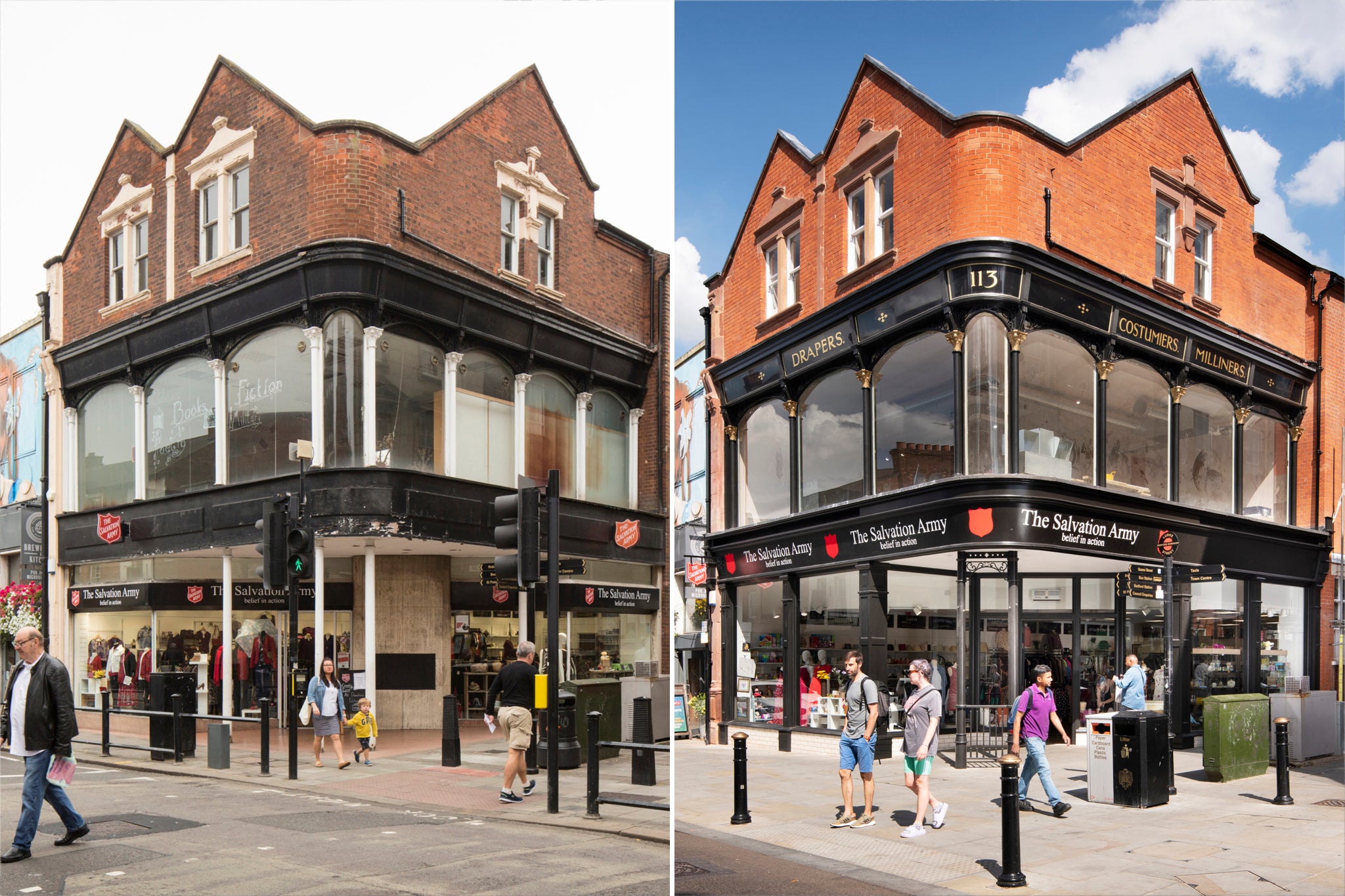For years, high streets across England looked like they were slowly fading away—shops closing, buildings falling apart, and foot traffic dwindling.
But now, many of those same streets are buzzing with new life thanks to a massive regeneration project that has breathed charm and character back into these once-neglected areas.
The Heritage Revival Project
At the heart of this transformation is a £103 million initiative led by Historic England, known as the High Streets Heritage Action Zones project.
Over four years, the programme restored 723 historic buildings, refurbished 462 shopfronts, and brought 43,000 square metres of commercial space back into active use.
Plastic shop signs, peeling paint, and boarded-up windows have been swapped for traditional facades featuring hand-painted signs, Victorian-style awnings, and elegant timber frames.
The changes haven’t just been physical—events, festivals, and public art have helped to attract more visitors and reignite civic pride.
What the Experts Are Saying
Louise Brennan from Historic England summed up the impact: the project has boosted local economies, created jobs, and made high streets more welcoming.
She added that it has also fostered a sense of community belonging and made cultural heritage accessible to more people.
Beyond restoring architecture, the initiative proved that heritage can be a powerful driver of long-lasting regeneration.
Local Success Stories
The results are easy to see on the ground.
In Lincoln, Sincil Street has been revitalized with boutique stores like Jailhouse Frock, painted in eye-catching pink and dressed with period details.
Weston-super-Mare now boasts a barber shop that proudly reflects the town’s Victorian roots.
In Tyldesley, Lancashire, a café owner described how his Victorian-era sash windows were brought back to life, giving his shopfront a look that could have easily belonged to the 1800s.
He hopes his restoration inspires others to revive more of the area.
Community-Led Change
One of the most remarkable aspects of the programme was the role of local residents.
In Tyldesley, for instance, people living nearby helped shape the changes, from improved shopfronts to greener public spaces.
Similar revivals have taken place in Bedfordshire, Norfolk, Derbyshire, Yorkshire, and Gloucestershire, proving the initiative’s nationwide reach.
Restoring History Across Regions
The programme has also tackled some of the country’s most historic sites.
Coventry, for example, saw 16 medieval-era shopfronts damaged during the Blitz restored with traditional designs.
Middlesbrough’s Grade II-listed Masham pub is now a cultural hub, and in London, a derelict Victorian bank has been turned into a new home for Refugee Education UK.
Even smaller touches, like giving a rundown parade between two pubs a smart new look, have sparked additional private investments.
Neighbouring businesses have followed suit, upgrading their own premises to match the refreshed streetscape.
Jobs, Homes, and Investment
According to an independent study, the initiative has already provided an economic boost worth nearly £250 million and created over 700 jobs.
It also helped bring 224 homes back into use and improved more than 119,000 square metres of public space.
Funding came through grants, often distributed by local councils, ranging from £300,000 to more than £5 million.
A Model for the Future
Duncan Wilson, Chief Executive of Historic England, called the project “heritage-led regeneration” that improves lives while ensuring long-term sustainability.
The initiative was designed around three goals: driving sustainable growth, changing how people view heritage, and restoring local historic character.
The independent evaluation showed that investing in historic places pays off—not just in money, but in pride, culture, and community spirit.
By showcasing how heritage can fuel renewal, the project has laid down a blueprint for other towns to follow.
What Comes Next?
The success of this four-year programme has proven that high streets don’t need to be relics of the past.
Instead, they can become vibrant community centres once again—places where people live, work, shop, and celebrate together.
With the evaluation results now published, other regions across the UK are expected to take inspiration from this approach.
The aim is simple: to ensure that historic high streets don’t just survive, but thrive, for generations to come.
